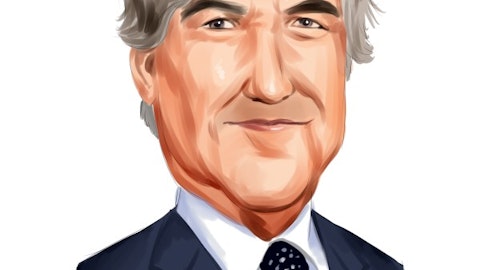Linda Tsai: Where do you think occupancy could end year end 23? And then maybe just stepping back like how far do you think we are in the urban recovery from versus pre-COVID for New York versus say like Chicago or San Francisco or DC?
Ken Bernstein: John, why don’t you take the first part, and then I’ll add some of that color.
John Gottfried: Yes. So, Linda, I’m going to go back to the caveat that Ken just mentioned, is that not occupancy is created equal given the street we have to lease up. But having said that, I would expect that our occupancy is going to further increase physically, net of expirations probably 50 to 100 basis points off where we are today. But at the same point we have to look at what we actually do. But I would say I would target. I’m targeting about 50 to 100 basis points of an increase.
Ken Bernstein: Now for where are we in the recovery for our various cities, what we have seen over the last year, is probably the easiest metric for you to look at, to gauge where we are in recovery, is where residential rents and occupancy is. Because what we found was New York recovered faster because even though return to work, return to Midtown has been very slow return to downtown, and residential rents around there rebounded quickly and sure enough we saw that rebound in SoHo. We certainly saw that rebound in Williamsburg, Brooklyn. So, New York was earlier from that perspective, notwithstanding return to work. Chicago, somewhere in between and they certainly have their challenges. We’ve been clear about North Michigan Avenue on that front, but then the other components of our Chicago portfolio, the Gold Coast, Lincoln Park, where they’ve had a stronger residential rebound there we’ve seen it in terms of sales.
You mentioned San Francisco, and it’s slower there. I think, we are seeing, I know we are finally seeing improvement there, but different type of workforce. They are only beginning to come back now, but they’re coming back, and with that you will see an improvement but that would be then in the earliest stages. Some of our other markets are then on the beneficiary side, Greenwich, Connecticut absolutely got a COVID lift. And what was a downward trajectory of rents on Greenwich Avenue for the five years prior to COVID got a COVID lift. Then down in Dallas, Henderson Avenue, continued population growth, there we’re seeing a lift there as well. So if at different levels of trajectory, some are going to post very strong growth off a low point, others are going to show consistent growth, because they got a COVID lift.
What our retailers are telling us is they really want and need to be in all of these locations over the next five years, because these are mission critical locations for their customers.
Linda Tsai: Thanks. And then the activity in your fund business this quarter, is this a byproduct of financing distress, and just indicative of greater opportunities for your fund business going forward?
Ken Bernstein: Probably, it’s a very confusing time for investors. In terms of activities so far, things quieted down, and they have quieted down in ways that we probably didn’t anticipate prior to the fed’s move, meaning lower cap rate, higher growth assets in many instances got hit harder than higher yielding assets. And on a portion of value that reset is playing out. I think, we have better clarity as to where long-term borrowing costs could be. And I think you’re going to start to see now sellers come back to the market either because they’re being forced by their lenders being forced by their partners, fatigue, but we’re just starting to see that kick in after a period of a couple quarters of relatively quiet activity.





